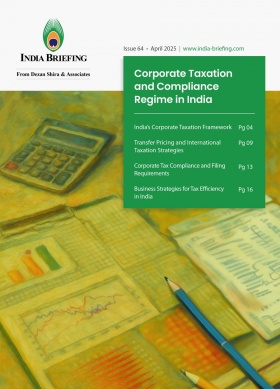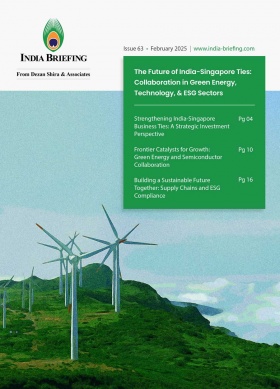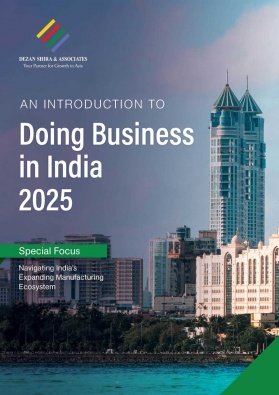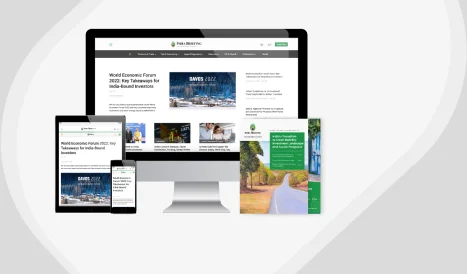India’s Textile PLI Scheme: Extended Window Offers Fresh Entry Opportunity
India has again extended the application window for the Textile PLI Scheme till December 31, 2025. This marks the third extension since the scheme’s August 8 reopening.
Businesses in the textile sector should act quickly to leverage the extended PLI window, as it offers a timely opportunity to secure incentives for scaling production and strengthening export competitiveness.
The Ministry of Textiles has announced a series of key amendments to the Production Linked Incentive (PLI) Scheme for Man-Made Fibre (MMF) apparel, MMF fabrics, and technical textile products. The revisions reportedly aim to address industry challenges, simplify compliance, attract fresh investments, and boost employment-aligning with the India’s broader vision to enhance its global competitiveness in the textile sector.
Major updates under the revised framework
- Expanded product coverage: The list of eligible products has been broadened with the inclusion of 8 new HSN codes for MMF apparel and 9 new HSN codes for MMF fabrics.
- Flexibility in business structure: Applicants can now set up project units within existing companies, eliminating the earlier requirement to create new entities.
- Reduced investment threshold: Effective August 1, 2025, the minimum investment requirement for new applicants has been cut by half, i.e., from INR 3 billion (US$33.81 million) to INR 1.5 billion (US$16.9 million) under Part-1 and from INR 1 billion (US$11.27 million) to INR 500 million (US$5.6 million) under Part-2 of the scheme.
- Relaxed turnover criteria: Beginning FY 2025-26, for new applicants the minimum incremental turnover needed to qualify for incentives has been reduced to 10 percent, down from the earlier 25 percent, applicable from the second year onward.
Application window extended to December 31, 2025
India’s has extended the application window for the PLI Scheme for Textiles till December 31, 2025. The application window will be open through the official portal, under the same terms and conditions outlined in the PLI Scheme for Textiles notification of September 24, 2021, and the scheme guidelines issued on December 28, 2021.
Industry leaders and textile associations have welcomed the reopening of the PLI Scheme application window, calling it a positive step that gives companies another chance to apply. They emphasized that, with incentives tied to both growth and investment, the scheme offers Indian textile manufacturers a strong opportunity to scale operations and boost global competitiveness.
PLI Scheme for Textiles: Applicants and target segments
By August 31, 2025, India had received 22 new proposals under the scheme. Furthermore, 74 companies have received approval under the textile PLI Scheme, with committed investments of INR 287.11 billion (US$3.23 billion), as of October 2025. These investments are expected are expected to generate an estimated turnover of INR 2.16 trillion (US$24.3 billion), create employment for over 259,000 people, and boost India’s manufacturing capacity in the MMF and technical textiles value chains.
|
Target segment |
Number of applicants |
Investment |
Turnover |
Employment |
|
MMF fabrics |
9 |
22.8 (US$256.99 million) |
244.95 (US$2.76 billion) |
10,914 |
|
MMF apparel |
12 |
21.77 (US$245.38 million) |
260.95 (US$2.94 billion) |
77,583 |
|
Technical textiles |
25 |
147.62 (US$1.66 billion) |
850.51 (US$9.5 billion) |
28,788 |
|
Multiple segments |
28 |
94.92 (US$1.06 billion) |
811.18 (US$9.14 billion) |
141,879 |
|
Total |
74 |
287.11 (US$3.23 billion) |
2167.60 (US$24.43 billion) |
259,164 |
Source: PLI, Ministry of Textile, Government of India.
Background and launch
The PLI Scheme for Textiles was first introduced on September 24, 2021, with an approved outlay of INR 106.83 billion (US$1.20 billion). Designed to boost domestic manufacturing, innovation, and exports, the scheme targets key textile segments, namely, man-made fiber (MMF) apparel, MMF fabrics, and technical textiles. Incentives are linked to both investment and incremental turnover, aimed at strengthening India’s global competitiveness.
Earlier revisions and reopening
The application process was first reopened in 2023, in response to industry requests for wider participation.
On February 24, 2025, India introduced amendments to the list of technical textile products covered under the PLI Scheme. This update follows earlier notifications issued on September 24, 2021, June 9, 2023, and October 9, 2024, which introduced and amended Annexure III of the scheme.
To ensure clarity and ease of implementation, India has released a comprehensive list of technical textile products eligible under the PLI scheme.
List of technical textile products eligible under the PLI Scheme for Textiles
|
S. no. |
Segment |
Product |
HSN code |
|
1. |
Geo-textiles |
Geo-grids |
5911.90.31 |
|
Geo-nets |
5911.90.32 |
||
|
Geo-membranes |
3920.10.13 |
||
|
Geo-tubes/geo-bags |
5603.94.10 |
||
|
Geo-textiles made from natural fibres |
5311.00.15; 5701.90.20 |
||
|
2. |
Agro-textiles |
Shade-nets |
6005.37.10 |
|
Mulch-mats |
5603.93.10; 5911.90.40; 5603.94.20 |
||
|
Anti-hail/anti-bird/anti-fog protection nets |
6005.37.10 |
||
|
Fishing nets |
5607.50.10; 5608.11.10 |
||
|
Crop covers |
5603.11.10 |
||
|
Turf protection nets |
5603.11.00; 5603.12.00; 5603.13.00 |
||
|
3. |
Medical/hygiene textiles |
Baby diapers, adult diapers, incontinence diapers, sanitary napkins |
9619.00.10; 9619.00.20; 9619.00.30; 9619.00.40; 9619.00.90 |
|
Surgical dressings, bandages, wound care products |
5906.10.00; 3005.10.10; 3005.10.20; 3005.90.10; 3005.90.30; 3005.90.40; 3005.90.50; 5601.22.00 |
||
|
Compression stockings for varicose veins |
6115.10.00 |
||
|
Surgical sutures |
3006.10.10 |
||
|
4. |
Defence textile |
Bullet-proof jackets, vests and uniforms |
6210.40.10 |
|
Nuclear, biological and chemical warfare suits |
6210.40.20 |
||
|
High-visibility clothing and infra-red clothing for military use |
6210.40.30 |
||
|
High-altitude clothing |
6210.40.40 |
||
|
Fighter aircraft clothing |
6210.40.50 |
||
|
Sub-marine clothing |
To be notified |
||
|
Tents, parachutes, collapsible textiles housing for military use |
5407.10.41; 5407.10.42; 5407.10.91; 5407.10.92 |
||
|
Special masks, including gas masks |
9020.00.00 |
||
|
Helmets and safety equipment (textile compared) for military use |
6506.99.00 |
||
|
5. |
Mobile textiles |
Safety airbags for automobiles |
8708.95.00 |
|
Automobile tyre cords |
5604.10.00; 5607.50.20; 5607.50.30; 5902.10.10; 5902.10.90; 5902.20.10; 5902.20.90; 5902.90.10; 5902.90.90 |
||
|
Seat webbing for automobiles and aircrafts |
8708.21.00 |
||
|
Air and oil filters for automobiles, railway coaches, and aircraft |
8421.23.00 |
||
|
6. |
Sports textiles |
Parachute fabrics/ballooning fabric for sports use |
5407.10.11; 5407.10.21; 5407.10.31; 5407.10.41; 5407.10.91 |
|
Sailing cloth |
6306.19.90 |
||
|
Protective equipment for cricket, boxing and other sports |
9506.91.10; 9506.99.20; 9506.99.90 |
||
|
7. |
Protective textiles (other than defence textiles): |
Personal protective equipment for medical use |
6210.10.10; 6210.10.20; 6210.10.60; 6210.10.70 |
|
Fire-retardant/fire-protection clothing |
6210.40.80 |
||
|
Chemical/petrochemical protection clothing |
6210.40.80 |
||
|
Electric arc protection clothing |
6210.40.80 |
||
|
Fire-retardant fabrics |
5515.99.50 |
||
|
Industrial gloves, industrial protective clothing, including high-visibility clothing for nonmilitary use |
6210.40.80 |
||
|
N-95 and N-99 masks |
6307.90.91 |
||
|
Gas masks |
9020.00.00 |
||
|
8. |
Building/construction textiles |
Architectural membranes |
3921.90.27 |
|
Wall coverings |
5905.00.90; 5905.00.10; 6303.12.00 |
||
|
Awnings & canopy |
6306.12.00; 6306.19.20 |
||
|
Floor coverings for special purposes such as fire retardant, fire resistant, chemical resistant, anti-static, and dust resistant and composite board |
5703.29.22; 5703.39.31; 5703.39.32; 5703.39.33 |
||
|
9. |
Specialty fibers & composites |
Carbon fibre |
6815.11.00; 6815.12.00 |
|
Aramids, meta-aramids, and para-aramids |
5503.11.10; 5402.11.00; 5501.11.00; 5503.11.20 |
||
|
Nylon 66 |
5503.19.30; 5402.19.20 |
||
|
Glass fibers, basalt fibers |
7019.11.00; 7019.12.00; 6815.99.30; 7019.13.00; 7019.19.00 |
||
|
Ultra-high-molecular-weight polyethylene |
5503.90.30; 5402.69.60 |
||
|
Composites made out of all above fibers (i) to (v) |
6815.13.00; 5503.30.10; 7019.63.00; 7019.64.00; 7019.65.00; 7019.66.00; 7019.14.00; 7019.61.00; 7019.62.00; 7019.69.00; 7019.15.00; 7019.71.00; 7019.71.00; 7019.72.00; 7019.73.00; 7019.80.00; 7019.90.00 |
||
|
10. |
Smart textiles embedded with active devices for medical, defence and special uses. |
To be notified |
– |
Source: Extraordinary gazette notification, Ministry of Textile, GoI.
PLI application and incentive disbursement process
Eligible manufacturers can apply for benefits under the scheme by following these steps:
- Register on the PLI portal: Visit the official portal and create an account using basic company details. Click here to register: pli.texmin.gov.in/user_registration
- Complete the application form: Provide information such as company name, address, proposed production targets, and investment plans.
- Upload supporting documents: Submit required documents, including the company’s registration certificate, permanent account number (PAN), and goods and services tax (GST) details.
- Submit the application: Once the form and documents are uploaded, the application can be formally submitted through the portal.
- Approval and disbursement: The Project Management Agency (PMA) will review the application. If approved, incentives will be released after the applicant completes all necessary pre-disbursal requirements.
Textile PLI Scheme: Segments and revised incentives criteria
The PLI Scheme for Textiles is structured into two parts, differentiated by the scale of investment and corresponding turnover requirements. The scheme is designed to promote the production of MMF apparel, MMF fabrics, and technical textile products within India.
Part 1: Large investment category
This category applies to companies willing to make substantial investments in plant, machinery, equipment, and civil works, excluding land and administrative buildings.
To qualify for incentives, participating companies must achieve a minimum prescribed turnover from notified MMF and technical textile products.
Under the latest regulatory amendments, effective FY 2025-26, for new companies the minimum incremental turnover requirement to remain eligible for incentives has been reduced to 10 percent, compared to the earlier 25 percent, applicable from the second year onward. This relaxation allows for greater flexibility and ease of compliance for participating firms.
Part 2: Medium investment category
This segment targets firms making comparatively smaller investments in plant, machinery, equipment, and civil works, excluding land and administrative buildings.
Eligible companies must achieve a specified minimum turnover from notified MMF and technical textile products to qualify for incentives. The incentive structure is parallel to Part 1 of the PLI scheme.
From FY 2025-26 onward, new applicants are required to demonstrate a minimum 10 percent year-on-year incremental turnover to continue receiving incentives from Year 2 onwards.
These revisions significantly lower entry barriers, improve investment feasibility, and enhance industry participation, aligning the scheme with India’s broader objective of strengthening its global textile manufacturing competitiveness.
(This article was originally published on August 19, 2025. It was last updated October 10, 2025.)
(US$1 = INR 88.71)
About Us
India Briefing is one of five regional publications under the Asia Briefing brand. It is supported by Dezan Shira & Associates, a pan-Asia, multi-disciplinary professional services firm that assists foreign investors throughout Asia, including through offices in Delhi, Mumbai, and Bengaluru in India. Dezan Shira & Associates also maintains offices or has alliance partners assisting foreign investors in China, Hong Kong SAR, Vietnam, Indonesia, Singapore, Malaysia, Mongolia, Dubai (UAE), Japan, South Korea, Nepal, The Philippines, Sri Lanka, Thailand, Italy, Germany, Bangladesh, Australia, United States, and United Kingdom and Ireland.
For a complimentary subscription to India Briefing’s content products, please click here. For support with establishing a business in India or for assistance in analyzing and entering markets, please contact the firm at india@dezshira.com or visit our website at www.dezshira.com.
- Previous Article CBIC Automates IFSC Code Registration to Boost India’s Trade Facilitation
- Next Article 印度太阳能制造业投资指南








